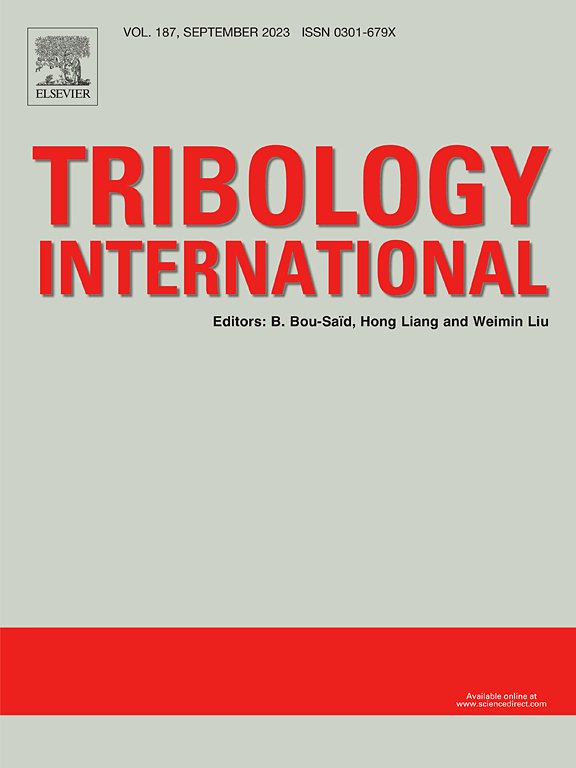Sintering temperature effects on mechanical properties and antagonist wear of 3 mol% yttria stabilized zirconia
IF 6.1
1区 工程技术
Q1 ENGINEERING, MECHANICAL
引用次数: 0
Abstract
3 mol% yttria-stabilized zirconia is widely used in dental restorations. However, due to its high mechanical properties, there is concern regarding the wear of its antagonist. This study investigated the impact of sintering temperature on the mechanical properties of 3 mol% yttria stabilized zirconia (3YSZ) and wear of its antagonist. Samples of 3YSZ were sintered at 1400 °C, 1500 °C, and 1600 °C. The microstructure of the samples was studied using a field emission scanning electron microscope (FESEM), and their mechanical properties, including density, Vickers hardness, and fracture toughness, were characterized. A wear test was conducted to measure the wear of the 3YSZ antagonist. FESEM results showed that the 3YSZ microstructure sintered at 1600°C was homogeneous, densely packed, and had fewer pores. Furthermore, it also displayed higher relative density, Vickers hardness, and fracture toughness. However, the group of 3YSZ sintered at 1600 °C exhibited the highest antagonist wear. A final sintering temperature of 1500 °C resulted in 3YSZ samples with optimal mechanical properties and low antagonist wear.
求助全文
约1分钟内获得全文
求助全文
来源期刊

Tribology International
工程技术-工程:机械
CiteScore
10.10
自引率
16.10%
发文量
627
审稿时长
35 days
期刊介绍:
Tribology is the science of rubbing surfaces and contributes to every facet of our everyday life, from live cell friction to engine lubrication and seismology. As such tribology is truly multidisciplinary and this extraordinary breadth of scientific interest is reflected in the scope of Tribology International.
Tribology International seeks to publish original research papers of the highest scientific quality to provide an archival resource for scientists from all backgrounds. Written contributions are invited reporting experimental and modelling studies both in established areas of tribology and emerging fields. Scientific topics include the physics or chemistry of tribo-surfaces, bio-tribology, surface engineering and materials, contact mechanics, nano-tribology, lubricants and hydrodynamic lubrication.
 求助内容:
求助内容: 应助结果提醒方式:
应助结果提醒方式:


